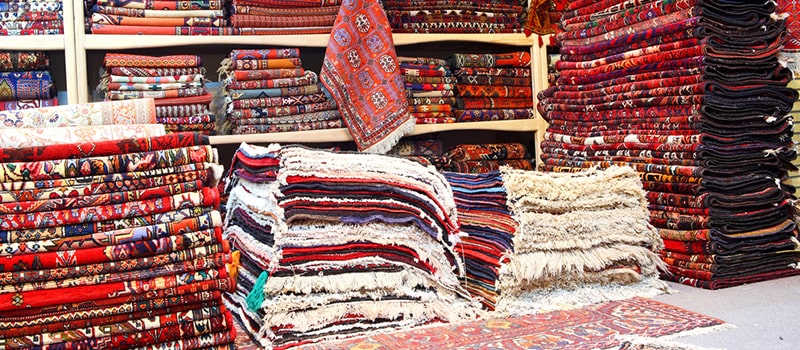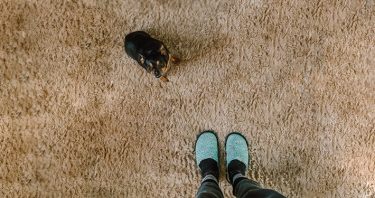How a Loom is Used to Make an Oriental Rug
Home » Green Carpet Blog » Oriental Rug Care » How a Loom is Used to Make an Oriental Rug


Recent discoveries of woven cloth from the Neolithic era, have pushed back the use of the loom to over 20,000 years before the present. The first looms were undoubtedly very simple affairs, and probably used tree branches that had been only slightly modified for use. While clothing items were the first produced on a loom, it is thought that the first knotted rugs came off these early looms approximately 5,000 years ago, although it is possible that even this date can be pushed back a few thousand years. Fragments of knotted rugs made of sheep and goat wool have been found in the region of the Caspian Sea from this distant era.
APPRECIATION OF CRAFTSMANSHIP
When you look at your handmade Oriental rug, you may want to take a few moments to appreciate the effort that has gone into its making by an unknown and anonymous artisan on a loom. A loom is a fairly simple instrument that can be used to make complex and beautiful Oriental rugs.
- The upper and lower beams hold the warp strings, which are usually cotton, but could also be wool or silk.
- The warp strings are the strings on which the knots will be formed.
- A shuttle will carry the weft string back and forth as each row of knots is completed.
- The heddle holds alternating warp strings separate from one another so that the shuttle can pass from side to side easily.
- A knife with a small hook on the end is used to pull the yarn back to the front of the rug after the weaver has pushed it through to the back to initiate knot making.
- A special comb is used after and before each throw of the shuttle to compress the completed row of knots, assuring that the rug will have a tight integrity.
- Scissors are used to trim the yarn to the correct length.
It’s easy to see that hand knotting a rug involves a great deal of work, and when your Oriental rug needs cleaning, you will want to make sure that it is carried out professionally by Green Carpet Brooklyn to preserve the beauty of your rug.


Categories
Carpets
Oriental Rug



